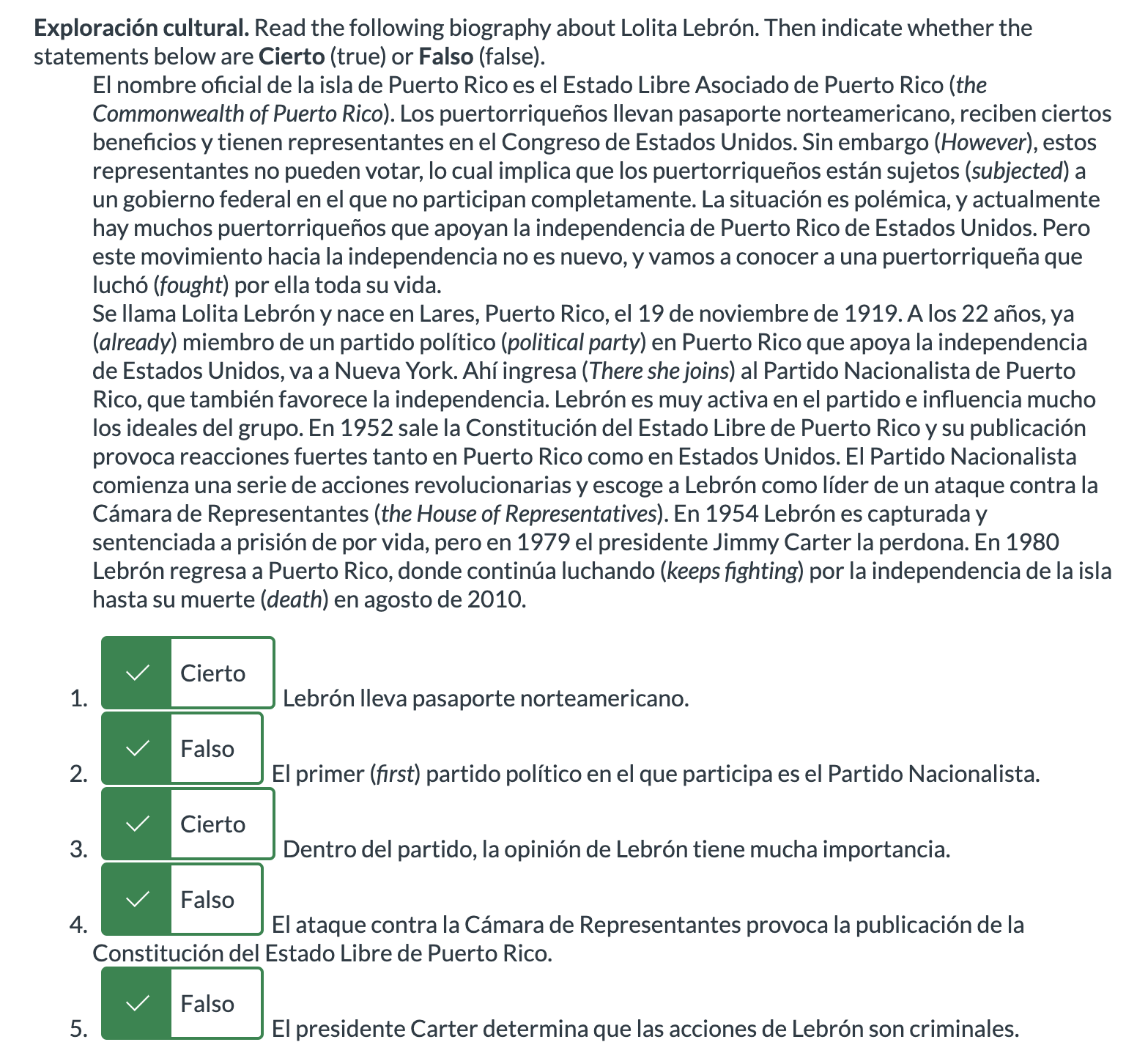Interpretive, Interpersonal, and Presentational Modes of Communication
Exploring Culture
Products and practices that helped me to gain an understanding of cultural perspectives were research, videos, and conversations. Each tool helped in a unique way to explore Spanish culture and gain a deeper understating of cultural norms. I utilized online resources to research, evaluate, investigate, and read facts and details about Spanish culture and how certain traditions came about, and why they are important. I watched videos that showed cultural practices to visually portray the cultural norm that may seem peculiar when reading about it versus seeing it. Finally, I also engaged in conversations with others to understand their perspective of their culture and how their culture shaped them and positively impacts their life. All of these played integral parts in assisting me in diving deeper into Spanish culture.
When exploring Spanish culture in Spanish 101 there were many similarities and differences between culture in the United States and culture in certain Spanish-speaking countries and regions. Utilizing research, videos, and conversations with my peers I was able to understand and even embrace some of the cultural norms in Spanish culture. One social norm that I was able to understand, and embrace was the kissing each other once or twice on the cheek form of greeting. At first, I found this form of greeting to be very unsanitary, however after watching videos of how this greeting is done and discussions with classmates, I began to understand this custom. One classmate compared the sincerity of a kiss on the cheek with a family member to this form of greeting and it was then I embraced how sincere and special such a greeting is. Utilizing research, videos, and conversations in tandem with one another allowed me to gain a broad understanding of the different Cultural differences and similarities between my own culture and the culture of different Spanish-speaking regions and countries.
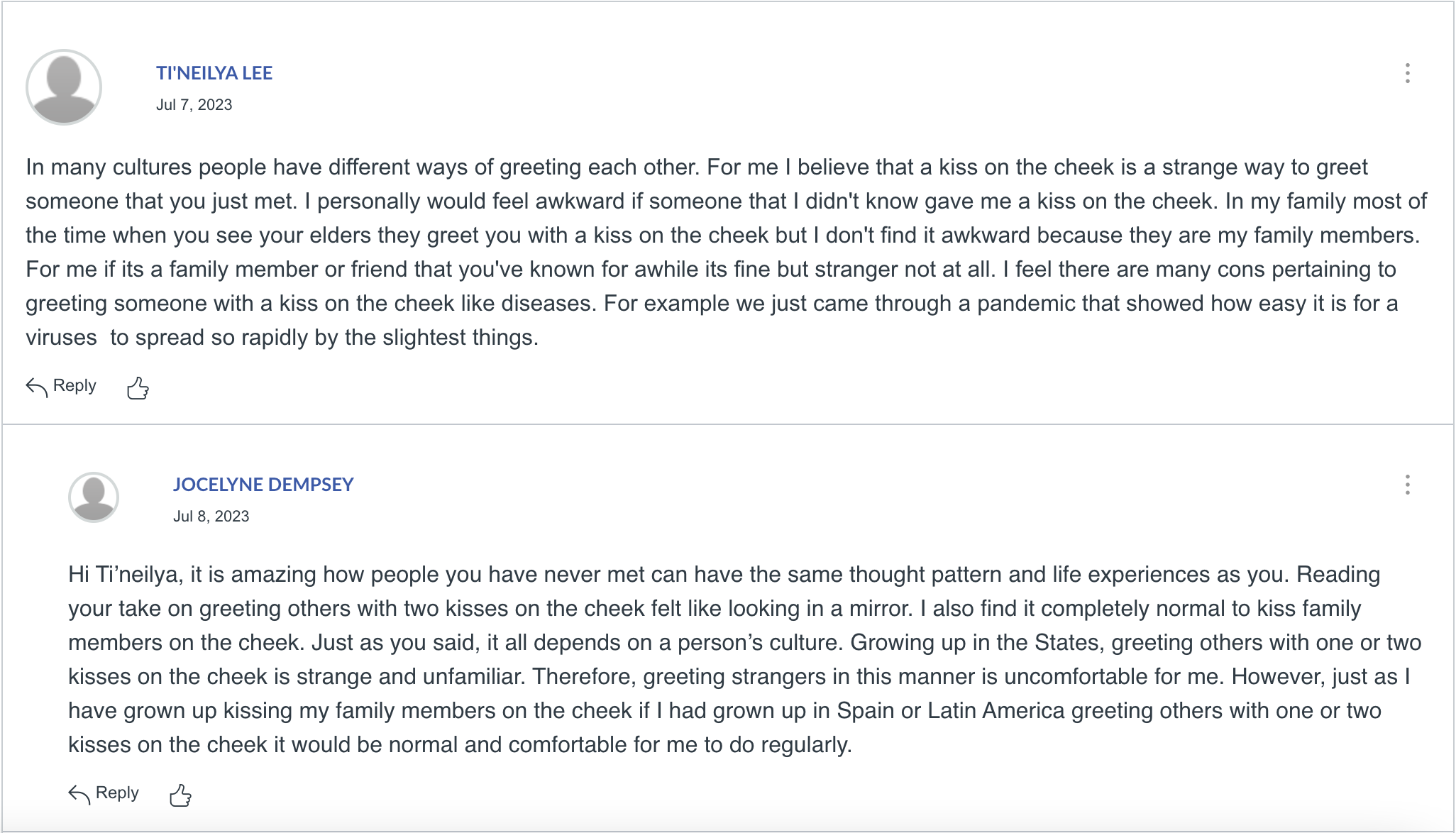
Engaging in Communities
When there are conversations with people from different backgrounds there is opportunity for learning, growth, and collaboration. However, the only way to have such conversations is by engaging with others in local and global communities. It is important to engage in your global community because it allows you to make connections with your neighbors and endeavor to make the communities better for others and yourself. Interacting with global communities is also very important because it allows people with different cultural perspectives to engage in conversations that can result in beneficial collaborations to improve each other’s communities. I have not had to opportunity to engage in global communities however I have had the opportunity to engage in my local community. I was able to beautify the community by assisting in garbage pickup.
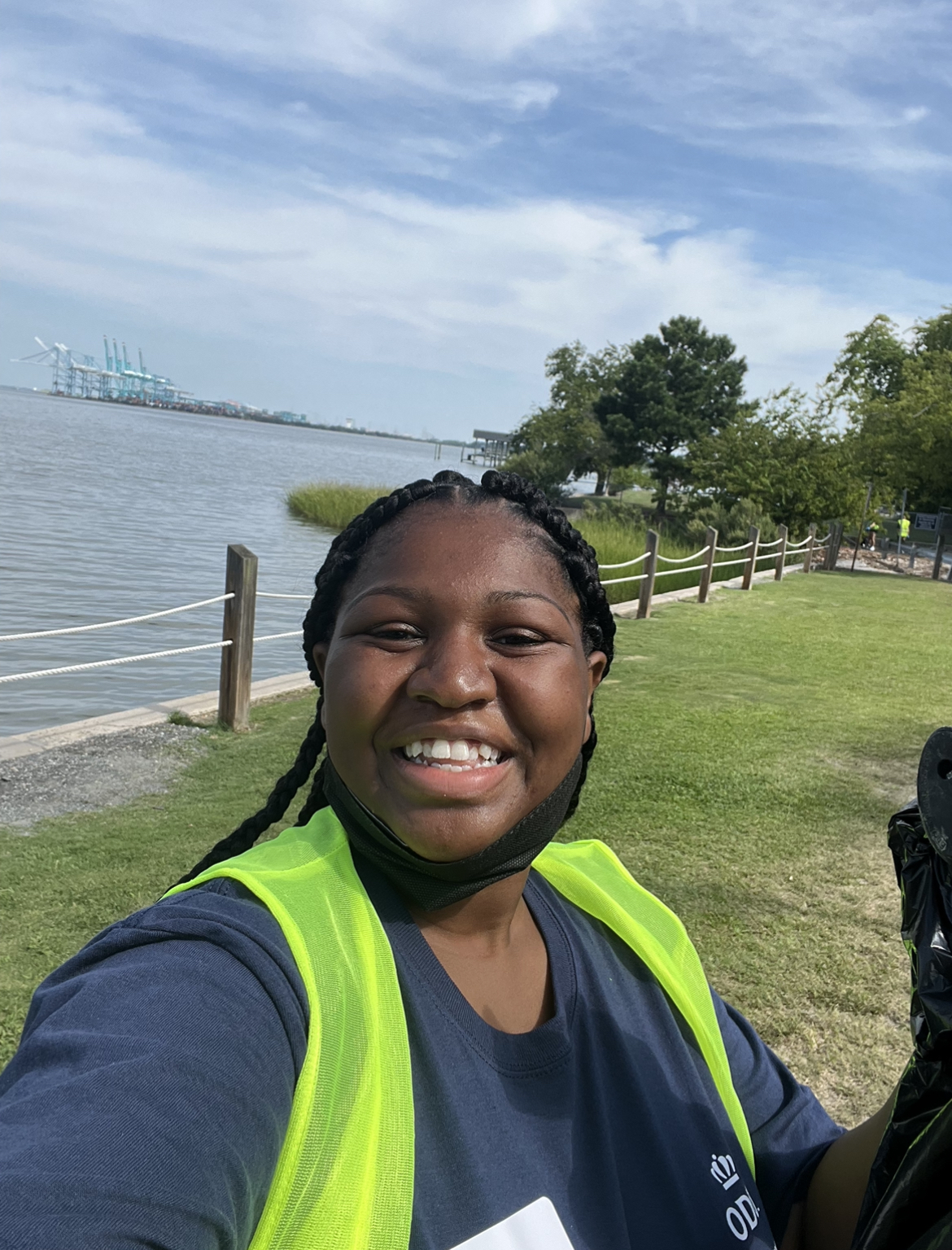
Interpersonal Communication
Flipgrid was a very prominent tool utilized to participate in interpersonal communication during my Spanish 101 course. Utilizing Flipgrid I was able to watch and respond to videos of classmates and Professor Gomez speaking in Spanish. This allowed me to practice listening for comprehension and replying to questions in Spanish.
During this course, the main form of interpersonal communication was with my professor, and classmates utilizing the Flipgrid system. When first beginning I was very nervous that I would not understand what was being said and that my pronunciation of Spanish vocabulary would be incorrect and incomprehensible. However, as the course progressed, I became more comfortable with many words and phrases in Spanish. For the first conversation with my professor, the fast way she fluently spoke in Spanish was difficult for me to comprehend and I had to play the video multiple times to first understand the dialogue to then respond. After that, I learned to pick out keywords, phrases, and inflections to help me comprehend what was said and respond. The assignment in which I excelled was asking my classmates questions and answering their questions. This became one of my favorite parts of the course because I was able to engage with my classmates who are also learning to speak in Spanish and gain confidence in my speech as I watched them also gain confidence in theirs.
Presentational Speaking
This semester one presentational speaking activity I did was the presentation
of the alphabet and words in Spanish. When completing this activity I had to present
to my classmates my ability to read, understand, and then share, all
information found on the slides.
For this course, I engaged in two personations. My first presentation involved me reading the slides presented to me and properly annunciating the Spanish words. In my second presentation, the assignment was to share in Spanish about a person that I admire. When giving my presentation I would change the fact that I did not have a visual aid. I believe that having a visual aid would have allowed me to verbally and visually share with my classmates who exactly it was I admire.
Presentational Writing
Presentational communication encompasses a wide variety of written communication. In this course, I wrote in both Spanish and English. In English, I often wrote communications with classmates sharing my opinion and perspective on different topics, and in Spanish, I often wrote short paragraph descriptions of either myself or others.
The art of writing is an ever-evolving task that evolves as the writer grows, matures, and learns their wringing. This same concept happened to me as I participated in presentational writing in Spanish 101. When writing communications for discussion boards with my classmates I grew more confident as I got to know my classmates and their different perspectives. I excelled at the opinion-based questions, but it took me longer to engage in written communication over topics I was unfamiliar with including a discussion about One of the oldest universities in Spain the UGR (University of Granada). The most difficult writing for me was writing in Spanish because that was new for me. As I learned more of the grammar rules and followed the structure for simple sentences, I grew more confident in my writing and my ability to form a cohesive paragraph in Spanish. Now I enjoy seeing just how many sentences I can properly write utilizing the Spanish language and grammar rules.
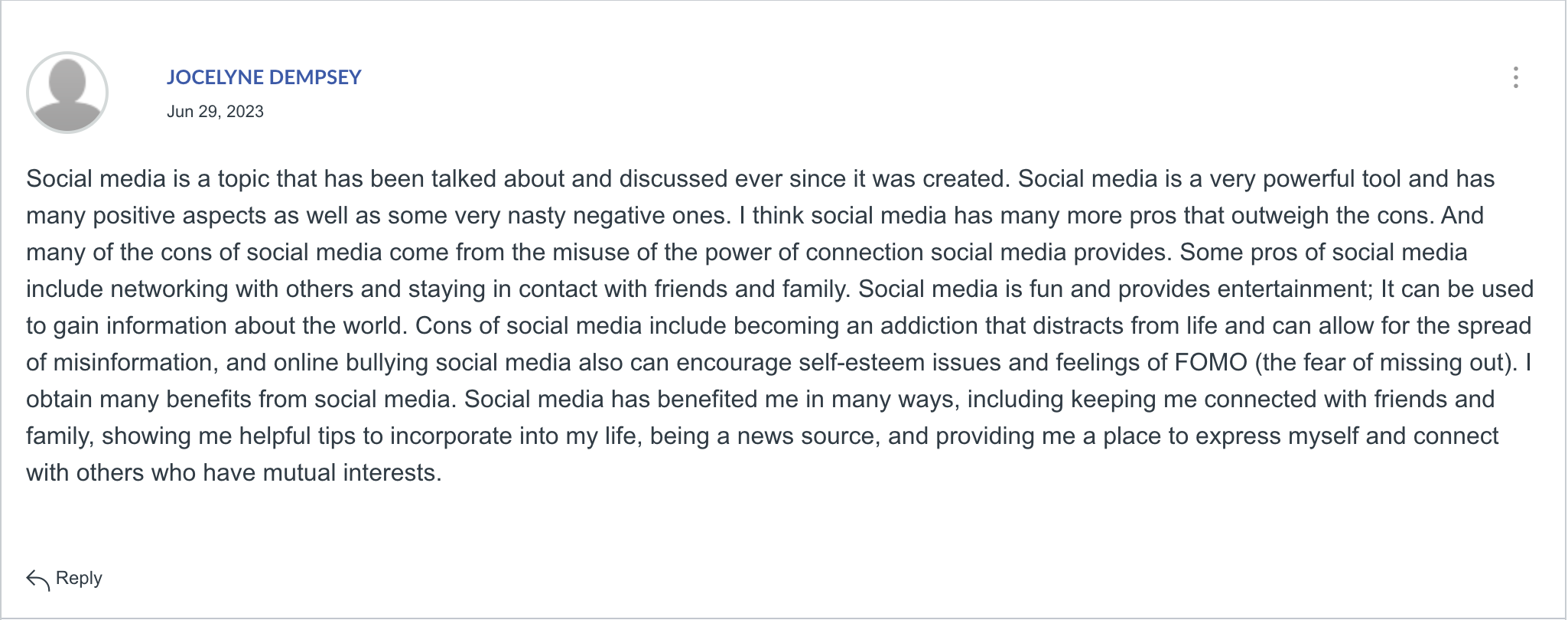
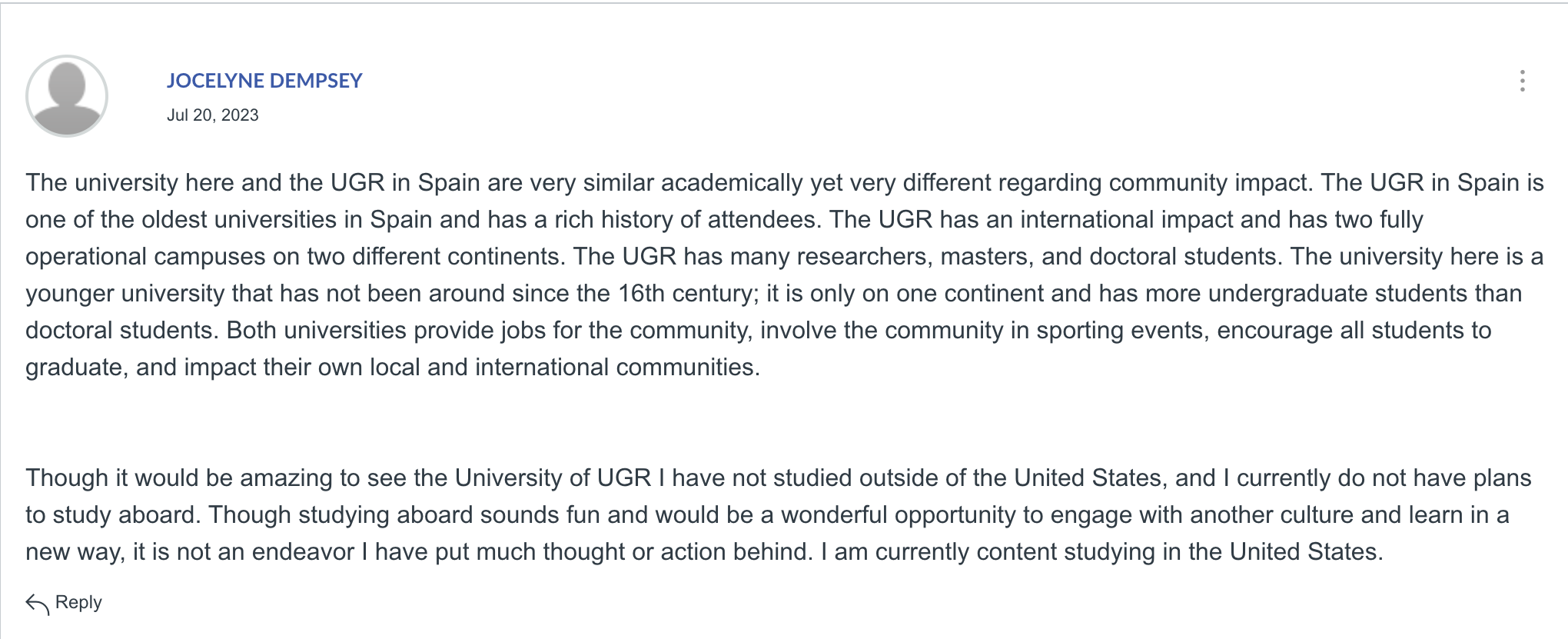


Interpretive Listening
When learning Spanish verbs and their conjugations it was important to not only know how to properly write the verbs but also how to say them and listen for them. One activity that was done to engage in interpretive listing was listening to sentences in Spanish and matching the written phrases with the audio recording. We also engaged in listening to Spanish interactions to help us better understand how to interact with others in Spanish.
Many of my interpretive listening experiences were related to my Spanish 101 course. In the beginning, when listening to the Spanish language, it was hard for me to mentally translate because I would search for familiar words and then try to understand the whole phrase all while a new phrase is being said. I had to embrace the pause button and take my time to listen carefully to each phrase, translate it, and then listen to the next one. It was very fascinating to find myself understanding more and more of the Spanish language. There is still so much of the Spanish language that I am not familiar with however I find myself more excited to listen to Spanish radio in the car and engage with the language through using my ears.
Interpretive Reading
Interpretive communication through reading is when you read a passage in Spanish
comprehend what is being said and can then answer questions relating to the
passage. In the course, I engaged in reading many real-life stories and
answering questions either related to the passage or to answer inquiries about
the person or persons referred to in the passage.
Reading paragraphs in Spanish was a learning experience. I had to go back to the reading strategies I learned when I was younger and take my time to understand passages. The reading strategy I utilized was to first skim through and identify all words and phrases I understood and then go back and read through them for understanding. This method worked well for simple sentences and paragraphs, however when the subject matter of passages exceeded what I understood from class I had to take a deep breath and utilize my resources. Some passages would have the English translation behind advanced dialogue and for others, I would have to utilize the Spanish dictionary to decipher what I was reading. As I read more and more passages in Spanish, I found it easier because I understood more words. It is amazing to me that I can now understand a passage simply by looking for the words I know and making inferences.
